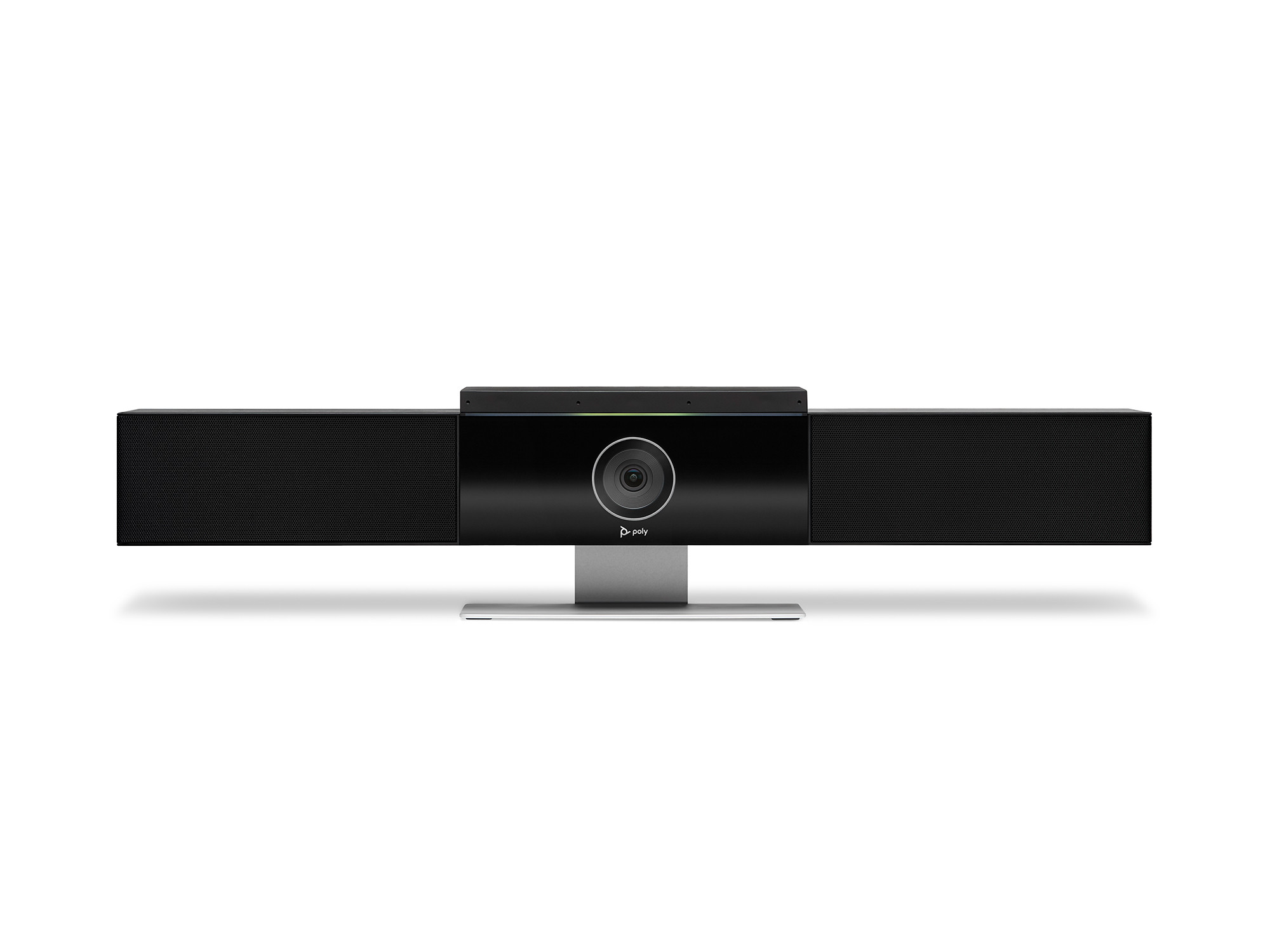



















£472.79*
- Resolution 3840 x 2160 4K UHD
- Field of view 120°
- Optical Zoom 5


Frequently purchased together
Product information
Poly Studio - a premium USB video bar for small rooms and big ideas. It offers best-in-class audio quality and blocks out distracting noises that can interfere with meetings. Participants on both sides understand every word. With group framing and automatic speaker tracking, it feels like you're talking to each other in person. What's more, all the important details are visible - right down to body language and facial expressions.
The cloud-based management tools allow the IT department to perform software updates and change settings from their desk. Poly Studio. The fast track to better collaboration in small meeting rooms.
Experience the following highlights:
- A USB video bar with good sound
- Disturbing noises are cancelled out thanks to our patented NoiseBlockAI technology
Be even more productive on both sides of your video conference, with a smart camera that automatically captures the room or tracks the person for better interaction
- Avoid 'sneakernet' with centralised management and enable large-scale deployments without adding to the IT department's workload
RAISE THE BAR
Create a personal connection: group framing and automatic speaker tracking are built right in with Poly DirectorAI technology. No drivers or software required. All participants in the video call can see the important details - including body language and facial expressions. And in presenter mode, the camera follows the presenter as if a cameraman were in the room.
FIRST-CLASS SOUND QUALITY FROM POLY
A USB video bar has never sounded so good. Powerful stereo speakers ensure that everyone can hear well. With the six-microphone array, you can be sure that your ideas will come across clearly. Thanks to Poly, everyone in the meeting is on an equal footing.
KEEP OUT DISTURBING NOISE
Poly NoiseBlockAI technology intelligently blocks out distracting noise that interrupts meetings. Acoustic Fence technology only detects voices in a defined area and blocks out extraneous voices.
EASY MANAGEMENT AND DEPLOYMENT
Management tools such as Poly Lens and cloud-based management software allow the IT department to perform software updates and change settings from the desktop. Centralised cloud-based management and large-scale deployments help IT eliminate the time-consuming "sneakernet". And it works with almost any video platform, so the investment is future-proof.
Technical data
| Name | Poly Studio USB Conference Camera, 3840 x 2160 4K UHD, 30 fps, 120° |
|---|---|
| Article number | 1000031434 |
| GTIN/EAN | 0197497463422 |
| Manufacturer SKU | 842D4AA#ABB |
| Model name | Studio USB |
| Brand | Poly |
| Product Type | Conference Camera |
| Application | Medium Rooms , Small rooms |
| Resolution | 3840 x 2160 4K UHD |
| Frames per Second | 30 fps |
| Focus type | Manual & automatic focus |
| Digital Zoom | 5 |
| Optical Zoom | 5 |
| Field of view | 120° |
| Inputs | 1x 3,5mm Jack , 1x USB-C |
| wireless technology | Bluetooth , WiFi |
| Product width | 10.5 cm |
| Product height | 70 cm |
| Product depth | 70 cm |
| Weight | 0.3 kg |
| Colour | Black |
| Delivery contents | Batteries , Power cable , Quick user guide , Remote control , USB-C to USB-A cable |
| Condition | New |
| Warranty | 24 Month |
| Warranty type | Bringin service Service and support information |
Product safety
| Person responsible for the EU |
|---|
| HP Deutschland GmbH |
| Herrenberger Straße 140 |
| 71034 Böblingen |
| Germany |
| firmen.kunden@hp.com |




